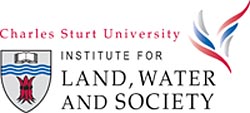
An academic paper highlighting the greater value people place on wetlands near the Coorong in South Australia compared to surrounding bushlands has been awarded top prize by environment academics from Australia and New Zealand.
Co-authored by senior environmental economist at Charles Sturt University (CSU), Professor Mark Morrison, and Dr Darla Hatton MacDonald from CSIRO, the research showed that people around the Coorong, in the capital Adelaide and elsewhere in South Australia were willing to pay much more money to protect the wetlands than scrublands or grassy woodlands in the same region.
“People living or owning land in the area were not likely to spend money to protect the grassy woodlands,” he said. “This is probably because they wanted to protect their access to more agricultural land, which would most likely come from clearing grassy woodlands.
“However people living elsewhere in South Australia would spend that money on improving grassy woodlands.
“Scrublands have the lowest values for most people in South Australia, except the locals.”
The values derived in this study have been used in government cost-benefit analyses of public programs.
“An example is the REFLOWS wetland rehabilitation project, where the project aimed to capture surface water and to redirect it to supplement environmental flows into the stressed wetlands and watercourses of the Upper South East region of South Australia,” Professor Morrison said.
“When only market based costs were included in the analysis, the costs of rehabilitating the wetlands and loss of on-farm production exceeded the benefits to agriculture from drainage and less flooding.
“But when the community values calculated in our study were included, the benefit cost ratio was much higher and provided an economic justification for the project to go ahead.”
Professor Morrison and Dr Hatton MacDonald received their award on Wednesday 28 September at the annual conference of the Environment Institute of Australia and New Zealand in Brisbane.

 An academic paper highlighting the greater value people place on wetlands near the Coorong in South Australia compared to surrounding bushlands has been awarded top prize by environment academics from Australia and New Zealand.
An academic paper highlighting the greater value people place on wetlands near the Coorong in South Australia compared to surrounding bushlands has been awarded top prize by environment academics from Australia and New Zealand.





Social
Explore the world of social